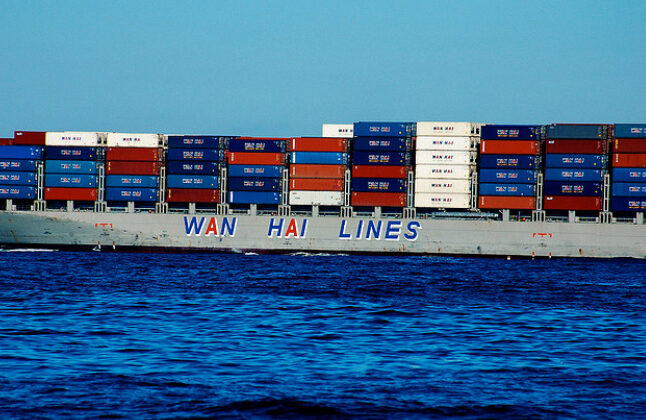
Wan Hai orders 50,000 containers amid shortage
Wan Hai Lines Ltd has purchased 50,000 twenty-foot equivalent unit containers from China International Marine Containers Ltd (CIMC, at a cost of US$141.73 million amid a global container shortage, the company said in a filing with the Taiwan Stock Exchange on Monday.
The average price of the containers would be US$2,835 per unit, Wan Hai said.
The company expects to receive the containers from the second quarter onward, Wan Hai spokeswoman Laura Su told the Taipei Times by telephone yesterday.
Most of the new containers would be 40-foot high-cube containers, one of the most commonly used containers for ocean freight, Su said.
“It is difficult to predict when the container shortage would end, although some people expect the shortage to end after the Lunar New Year holiday,” Su said. “We hope to resolve the issue as early as possible with the purchase of new containers.”
The shortage was caused by many containers piling up at ports or being “in the wrong places,” due to congested seaports and reduced personnel amid COVID-19 lockdowns worldwide, Su said.
Therefore, containers have been taking longer returning to their places of origin, which disrupted the logistics chain and caused concerns for Wan Hai’s customers, she said.
The purchase is not a particularly big order for Wan Hai, as the shipper buys new containers with a similar combined capacity every year, Su said.
However, it came earlier than expected, as Wan Hai had bought 37,000 containers in October last year from CIMC for US$109 million, she said, adding that the company has begun taking delivery of some of those containers.
The average age of Wan Hai’s containers is 4.3 years, lower than the global average of 6.6, she said.
The shortage has driven up sea freight rates, which boosted Wan Hai’s revenue last quarter to a record NT$11.6 billion (US$408.31 million), up 75 percent year-on-year.
Wan Hai has a rosy outlook for its orders leading to the Lunar New Year holiday, but the post-holiday outlook remains unclear, Su said.
Wan Hai owned 66 ships and was chartering 39 ships as of Sept. 1 last year.
Intra-Asian routes contributed 70 percent to its total revenue, followed by Middle Eastern and Indian routes with 20.6 percent. The US and South American routes accounted for 5.6 percent and 6.6 percent respectively, company data showed.
